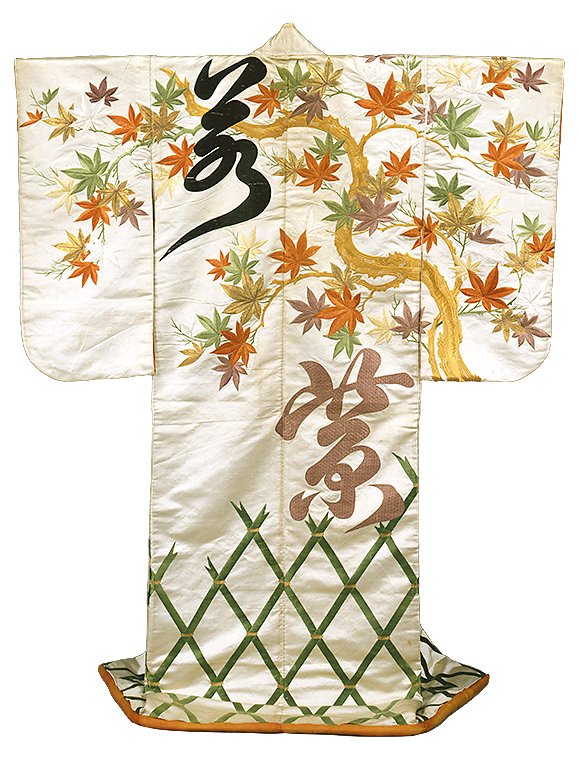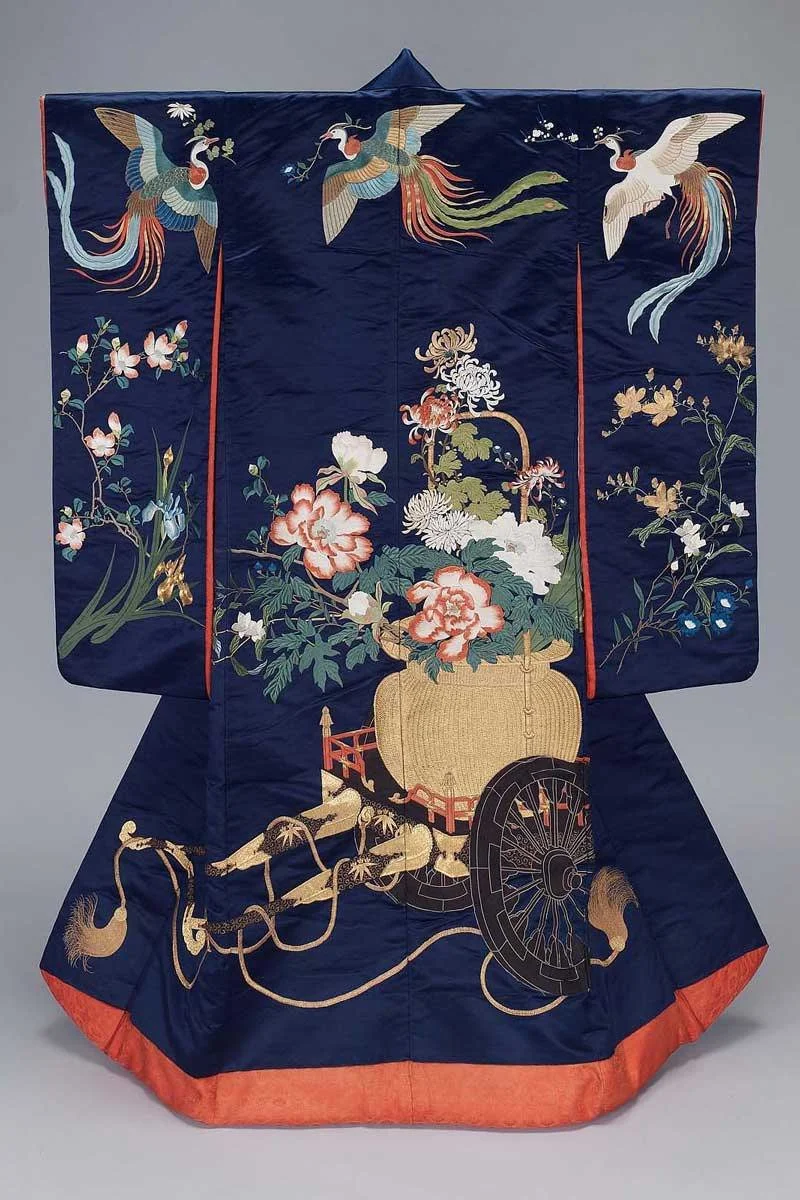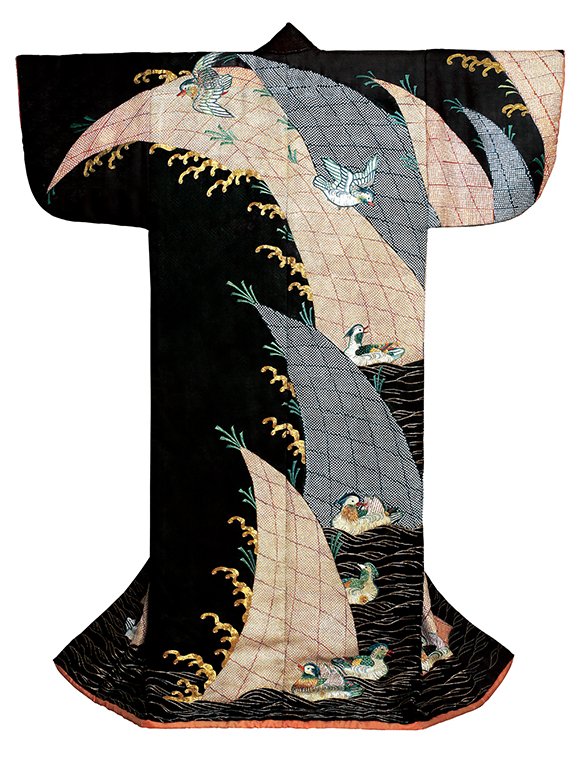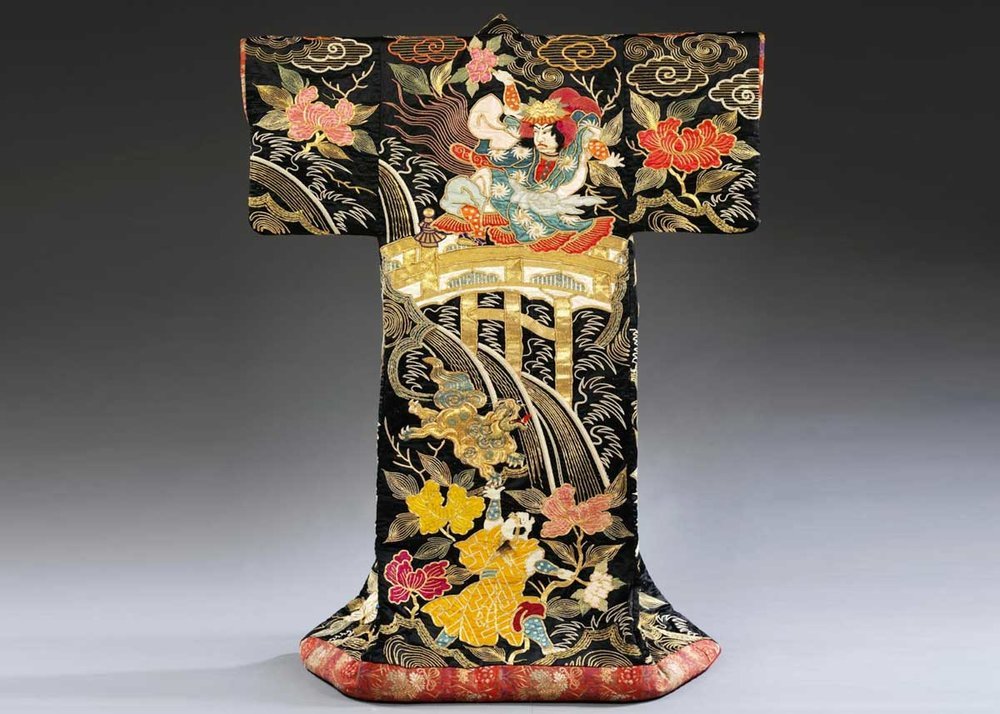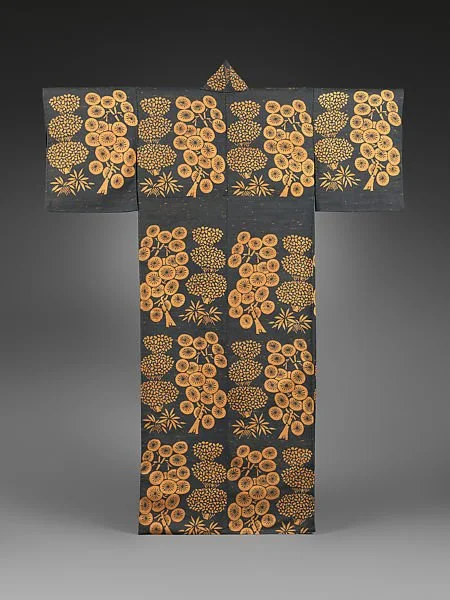Kimono
Meaning 'the thing to wear', the Japanese word kimono was first adopted in the mid-19th century. Originally worn by commoners or as an undergarment by the aristocracy, from the 16th century kimono were the principal item of dress for all classes and both sexes in Japan. Their legacy on the fashion world since then however, has been enormous.
In kimono it is the pattern rather than the cut of the garment that is significant. Indications of social status, personal identity and cultural sensitivity are expressed through each piece’s colour and decoration and the images often have complex levels of meaning. The most popular bird depicted on kimono is the crane. Believed to live for a thousand years and to inhabit the land of the immortals, it is a symbol of longevity and good fortune.
Colours also have strong metaphorical and cultural meanings. Dyes are seen to embody the spirit of the plants from which they are extracted and medicinal property is also believed to be transferred to the coloured cloth.
The richest source for kimono motifs comes from the natural world; flowers such as peonies, wisteria, hollyhocks, cherry blossom feature heavily alongside birds, butterflies and dragonflies. On some kimono whole landscapes of mountains and streams are depicted. These elements of the natural world usually have strong poetic associations, while more complex landscape scenes often refer to particular stories drawn either from classical literature or popular myths.
I love their one-off distinctiveness. As well as their allusions to mythical and magical days far far away among the cherry blossom…


